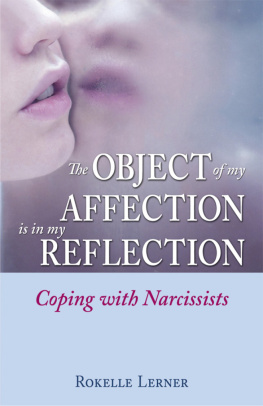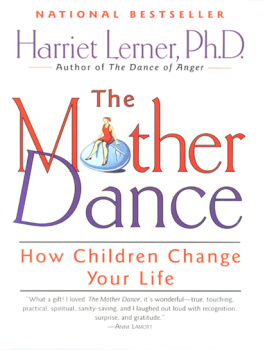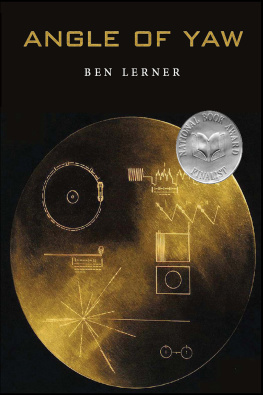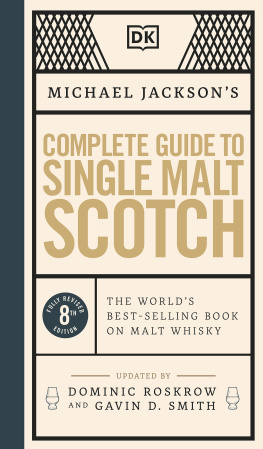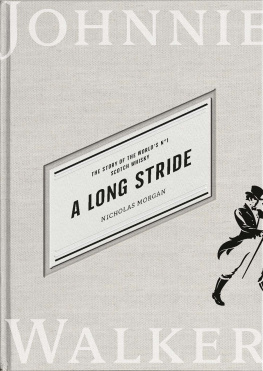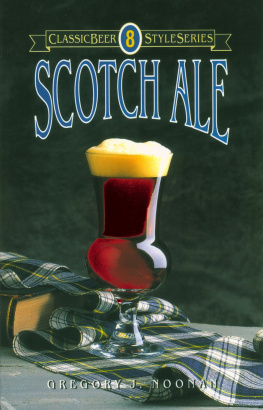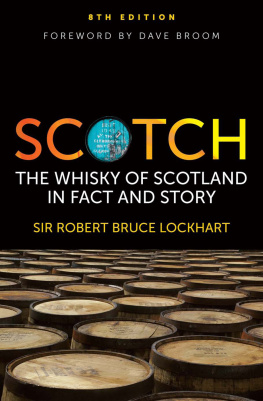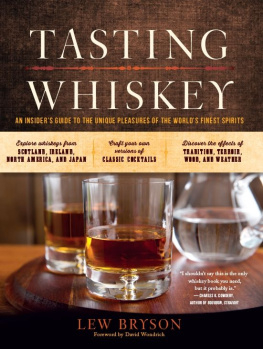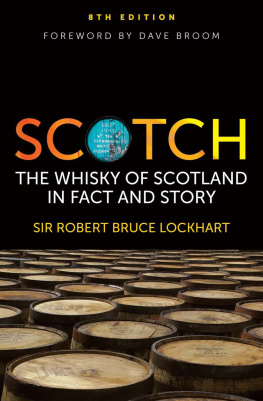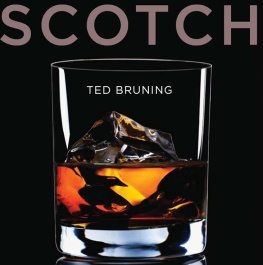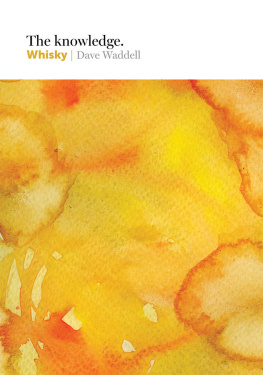SINGLE MALT AND SCOTCH WHISKY
A GUIDE TO HUNDREDS OF BRANDS & VARIETIES
Daniel Lerner
HUNDREDS OF VARIETIES
DISTILLED AND AGED BY BLACK DOG & LEVENTHAL PUBLISHERS


Copyright 1997, 2006
Black Dog & Leventhal Publishers, Inc.
All rights reserved. No part of this book may be reproduced in any form or by
any electronic or mechanical means including information storage and retrieval
systems without written permission of the publisher.
Published by
Black Dog & Leventhal Publishers, Inc.
151 West 19th Street
New York, NY 10011
Distributed by
Workman Publishing Company
225 Varick Street
New York, NY 10014
Cover design: Ohioboy Design / Andy Taray
Photo research: Sarah Parvis
ISBN-10: 1-57912-577-8
ISBN-13: 978-1-57912-577-6
eISBN: 978-1-60376-316-5
Library of Congress Cataloging-in-Publication data is on file at
Black Dog & Leventhal Publishers, Inc.
INTRODUCTION
Imagine the Scottish Highlands around AD 500. A savagely beautiful landscaperolling heather and peat-covered hills, pure water flowing from burns and springs, fields of ripe, golden barley gently swaying in the summer Highland breeze. The procedure for producing a fermented, low-alcohol beverage was already known by this time, and Highlanders were already enjoying a primitive form of beer.
The production of alcoholic beverages is considered a significant marker of civilization. The Chinese and ancient Greeks, for example, both produced crudely distilled alcoholic drinks. There is evidence of the distillation process in Britain long before the arrival of the Romans. However, that too was still rudimentary. Unlike the beer of our day, the stuff that Highlanders drank more than 1,500 years ago must have resembled thin, alcoholic oatmeal.

THE VIEW FROM BEN NEVIS, THE HIGHEST POINT IN SCOTLAND.
When the Moors arrived in Europe some time between the ninth and tenth centuries, they brought with them a sophisticated process of distillation originally developed to make fragrances, which was adapted to make spirits from fermented grains. In Britain in the early part of the sixteenth century, because of the perception that whisky possessed medicinal and curative powers, the Guild of Surgeon Barbers was given a monopoly on the production of whisky.
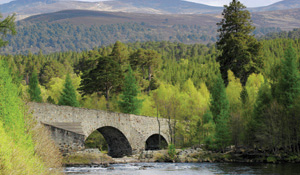
A QUAINT BRIDGE OVER THE RIVER DEE.
The first distillery officially documented was erected sometime in the 1670s, although distillation was occurring well before this time. Ironically, the whisky made by the unlicensed distilleries was said to be of a higher quality than the product made by the official distilleries because smugglers did not have to follow the draconian governmental guidelines regulating alcoholic strength and other levels of concentration. By the early nineteenth century, many illicit distilleries became licensed. Many more new distilleries were built on the sites of former illicit stills. Often the smugglers themselves were recruited to run these new legitimate operations, because of their prior experience.

HEATHER-COVERED HILLS DOT THE LANDSCAPE OF SCOTLAND.
Andrew Usher, who was an agent for Glenlivet Distillery, famous even in 1853, came up with the first vatted malt and gave it a proprietary name, Ushers Old Vatted Glenlivet. A specified blend of malt whiskies of various designated ages, Ushers recipe could be predictably reproduced. Up until this point, blending was used to hide the flaws of cheaper whisky by adding small amounts of good malt. Whisky was delivered to wholesalers in either wooden casks or stone jars. Then the blending was done by grocers, wine and spirit merchants, and inn owners. But with Ushers Old Vatted Glenlivet, an affordable good drink was now available in a bottle and made available to the general public. Other blended recipes developed during this period, including Dewars, Haig, and Johnnie Walker. Between the new ease of production and transportation and a high-quality product, whisky exporting flourished.

DEWARS WAS ONE OF THE FIRST BLENDED WHISKIES; THIS BOTTLE IS FROM THE 1880S.
Starting in 1860 and lasting until the late 1890s, a vine-killing microscopic bug called phylloxera destroyed most of the vineyards in France. Because no grapes were available, brandy could no longer be produced in commercial quantities. Scotch filled the gap in that market and fully established itself as a desirable and sought-after beverage all over the world.
Since 1900, the popularity of malt whisky has gone through several cycles of expansion and contraction. The major events of the twentieth centuryWorld War I, the Great Depression, Prohibition, and World War IIseverely impacted the production and consumption of whisky. After each of these catastrophic events, however, the whisky industry revived itself. Through intense determination, perseverance, and skill, whisky makers continue to produce to this day a great variety of whiskies of consistently high quality, great breed, and distinct style. Times have never been better for lovers of malt.

THE MASTER BLENDER INSPECTS A NEW BOWMORE SPIRIT.
CHAPTER 1
HOW TO USE THIS BOOK
The goal in writing this guide is to provide easily accessible information about the history, production methods, current trends, availability, and tasting profiles of single malt and Scotch whisky.
At first blush, the world of whisky can seem a bit daunting in its variety and complexity. There are many different distilleries, around one hundred by last count, many of which produce and bottle a profusion of whiskies. Add to this the explosive growth of the independent bottling movement. The independent bottlers provide us with whiskies from individual casks, usually at cask strength, single-vintage bottlings, and library ranges, which include numerous vintages from a single distillery. Wood-finished whiskiesthat is, whiskies that spend some additional aging time in barrels made from various kinds of woodshave recently become popularized. Just to further complicate the issue, all of these ranges are available in both official distillery bottlings and independent bottlings. New vatted malts, single-grain whiskies, and a continually expanding catalog of blended whiskies continue to enter the market. Its no wonder the consumer is overwhelmed.
This guide explores the world of whisky one step at a time. First, the history of whisky is discussed, outlining the development of the distilleries and the refinement of the distillation process. This is followed by an explanation of production methods. The malt whisky regions are described, and examples of various whiskies are cited that illustrate each regions individual and unique characteristics. Whats on the Label provides definitions of bottling, labeling, and aging terms. There is a discussion of aging and bottling regimens, as well as statistical information relating to the whisky industry and the worldwide market. One indispensable section is the alphabetical guide giving the individual single malts with descriptions, tasting notes, and distillery contact information. A listing of currently available blended whiskies with tasting notes follows. A glossary of terms and a resource guide for further exploration conclude the guide.


